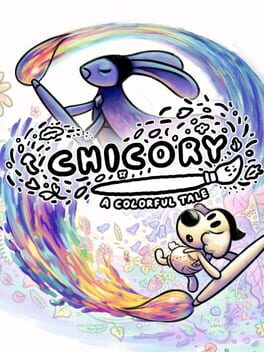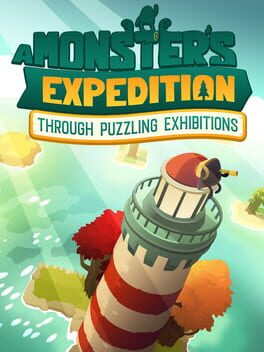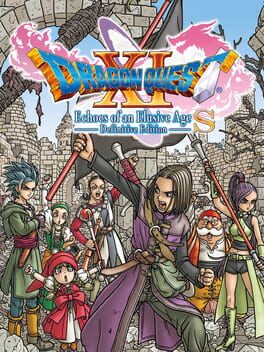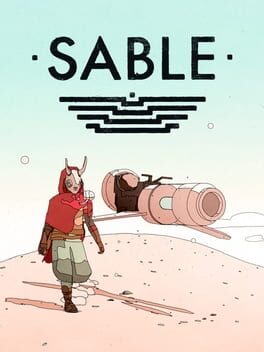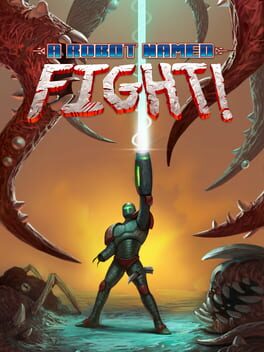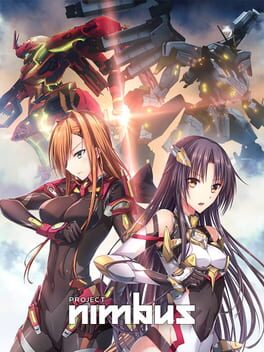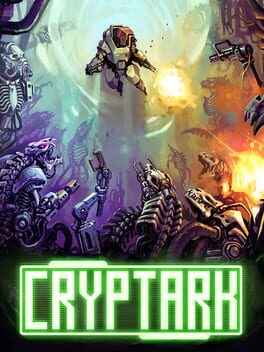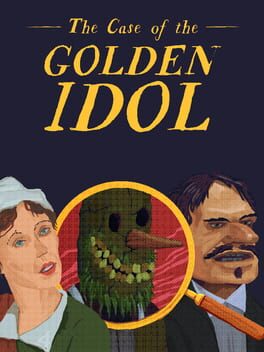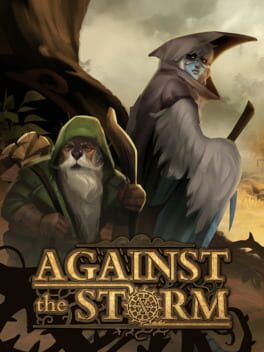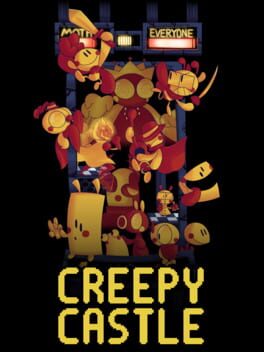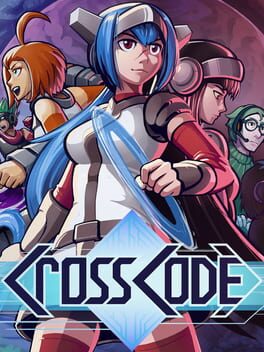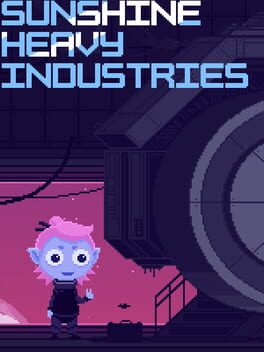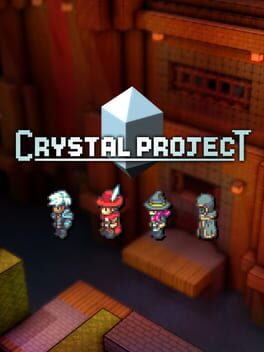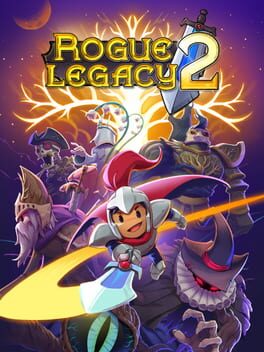thunderfunking
lovely reflection on the trials of stepping into the identity of an artist, overcoming impostor syndrome, and learning where your art fits into the world. gameplay is arguably the weakest link - the action of painting gets repetitive quickly. the platforming is janky, the bosses are awkward. still worth the time for a great concept and thoughtful writing.
excellent no-nonsense puzzler. fundamentally the same as Stephen's Sausage Roll, but much more polished and easy on the eyes. usually has a few paths to choose from so that you don't get stuck, which is crucial. the pacing of challenges is just right, it's always building up your skillset but will jump ahead from time to time to show you that there's concepts yet to be learned. feels good when you're on a roll.
suffers from all the fatal gameplay flaws of modern JRPGs. benefits from incredible art direction and lovely cities. special shoutout to the hidden chests in dense/urban areas, i had a blast hunting those down. but most of the game is tedium through bad dialogue, a paint-by-numbers story, lifeless characters, repetitive combat, and awful outdoor level design. it's probably the best JRPG made in the last decade, yet it still makes me yearn for the better days of this genre.
yes, i did play for 120 hours. it was lockdown of winter 2020/2021 and i let Tim Rogers persuade me to try this against my better instincts. i learned a valuable lesson: there's a difference between an entertaining review and an accurate assessment of quality or worth.
yes, i did play for 120 hours. it was lockdown of winter 2020/2021 and i let Tim Rogers persuade me to try this against my better instincts. i learned a valuable lesson: there's a difference between an entertaining review and an accurate assessment of quality or worth.
2021
stunning artwork and aesthetic. i found the movement to be clunky and unpleasant, hampered by unreliable collision and momentum. i hesitate to give games like this a negative review because this is an authentic creative project made with heart and soul. respect! but if there's gonna be platforming, i crave a bit more attention to the details of navigation.
2017
Metroid is an odd choice to replicate within a procedural roguelike. the charm of Metroid is in its level design - discovering secrets, unlocking shortcuts, chipping your way through the whole map. here, you lose all the nuance and intentionality to random generation. the map generator has a lot of variety and sprawl to it that could keep exploration fresh, but the movement is syrupy and the shooting is clunky, which dissuaded me from diving deeper.
2017
2017
twin-stick / shmup take on Void Bastards. great bones here with a bit of heist planning and strategy around routing, a variety of weapons with oomph, and fun flavor and aesthetics. unfortunately there are many systems that discourage experimentation, risk-taking, and exploration. i wanted to get into this, but found it too easy to lose in unfair circumstances.
the balance of numbers suggests you shouldn't be taking hits, yet the mission objectives invariably trigger uncontrollable chaos. it's hard to get through unscathed against the erratic enemy AI, the volume + speed of projectiles, and the random level layouts where it's easy to get cornered. limited and expensive ammo makes it preferable to avoid combat, but many levels are swarming with enemies and even create more as the mission goes on. healing is expensive, health pools are low, and iframes are short. the rewards and item costs need tuning; the bounties for optional objectives are often less cash than the raw value of the ammunition required to complete the objectives. there's not enough incentive to grind it out and master the bullet hell when failing the campaign means losing all the upgrades and options in the arsenal.
i'd love to see this tuned in one direction or another - towards a stealthier, fragile action that occasionally breaks out into chaos when alarms are tripped, or a more endurance-based run-and-gun to outlast pursuing swarms of enemies. as is, this sits at an unsatisfying middle ground.
the balance of numbers suggests you shouldn't be taking hits, yet the mission objectives invariably trigger uncontrollable chaos. it's hard to get through unscathed against the erratic enemy AI, the volume + speed of projectiles, and the random level layouts where it's easy to get cornered. limited and expensive ammo makes it preferable to avoid combat, but many levels are swarming with enemies and even create more as the mission goes on. healing is expensive, health pools are low, and iframes are short. the rewards and item costs need tuning; the bounties for optional objectives are often less cash than the raw value of the ammunition required to complete the objectives. there's not enough incentive to grind it out and master the bullet hell when failing the campaign means losing all the upgrades and options in the arsenal.
i'd love to see this tuned in one direction or another - towards a stealthier, fragile action that occasionally breaks out into chaos when alarms are tripped, or a more endurance-based run-and-gun to outlast pursuing swarms of enemies. as is, this sits at an unsatisfying middle ground.
2022
Beautiful and crisp presentation of a multi-layered world riddled with secrets, but not quite what I was looking for. The combat didn't work for me and I underestimated how important the secrets are to progression.
Fraught combat dominates the game, halting the fun of exploration. Enemies have movement patterns that clash with the environment and geometry; it seems like encounters were designed with larger arenas in mind. The range of the melee attack is painfully short, demanding precise movement in a game where things feel a bit floaty. Windups, telegraphs, and triggers are inconsistent, which means a lot of time can be lost to learning each enemy's individual quirks. Lastly, the choice to inflict double damage while out of stamina pours salt into the wound; it seems like an attempt to prevent roll-spamming, which I suspect is needed because otherwise you could skip too many encounters. It all adds up the sort of difficulty that, while it can can be mastered, felt at odds with the elements of the game I enjoyed.
I love the many hidden alcoves and interconnected pathways throughout the world; discovering these was a pure joy and there's many routes to try. Progression eventually depends on decoding a secret language. I'm happy to take notes or draw a map if needed, but decryption is a step beyond what I'm willing to do. it's possible that if I weren't bumping up against the combat so much I may have had more room for this kind of intrigue, but the combination of opaque roadblocks with frequent deaths pushed me out of the experience before it had a chance to get its hooks into me.
Fraught combat dominates the game, halting the fun of exploration. Enemies have movement patterns that clash with the environment and geometry; it seems like encounters were designed with larger arenas in mind. The range of the melee attack is painfully short, demanding precise movement in a game where things feel a bit floaty. Windups, telegraphs, and triggers are inconsistent, which means a lot of time can be lost to learning each enemy's individual quirks. Lastly, the choice to inflict double damage while out of stamina pours salt into the wound; it seems like an attempt to prevent roll-spamming, which I suspect is needed because otherwise you could skip too many encounters. It all adds up the sort of difficulty that, while it can can be mastered, felt at odds with the elements of the game I enjoyed.
I love the many hidden alcoves and interconnected pathways throughout the world; discovering these was a pure joy and there's many routes to try. Progression eventually depends on decoding a secret language. I'm happy to take notes or draw a map if needed, but decryption is a step beyond what I'm willing to do. it's possible that if I weren't bumping up against the combat so much I may have had more room for this kind of intrigue, but the combination of opaque roadblocks with frequent deaths pushed me out of the experience before it had a chance to get its hooks into me.
2022
I try to avoid Early Access whenever possible, but I was so tempted by this formula I had to take a peek. It's a delightful mix of the resource/tech scramble of an RTS like Age of Empires, smashed together with the cyclical and timed survival elements of Frostpunk, as well as the logistics and planning of a more traditional city builder. The roguelite system is an excellent fit here and encourages a less nitpicky style of play than I usually fall into with strategy games, while also encouraging experimentation with each session. I love the visual style, there's a well-tuned difficulty curve, and the core loop is rock solid. The unpolished bits (as of November 2022) are in the UI, long-term progression, and strategic depth.
The UI will benefit a lot from some quality of life updates. Many actions get to be repetitive - removing / assigning workers especially, since you're doing it almost all the time. A lot of sound effects are quite similar and it isn't always clear what triggered that obviously important sound you just heard. notifications can get noisy and there's no way to quickly clear them out. Many buildings look very similar and I often found myself hunting for the right building to do the work (the ALT/CTRL modifiers did help with this, though). The icons can be difficult to distinguish between each other, which adds to the initial learning curve.
The roguelite / progression aspect appears to be padded to slow down players before they burn through all the content. There also isn't a lot to be excited about in the tech tree once you get through the "essential" upgrades. It can feel kinda bad because those upgrades seem truly necessary to play the game as it was meant to be experienced (housing and trade in particular), but it can be 10-20 hours before those are all available.
Lastly, I hope there will be some more strategic options available, in terms of how to reach victory in each session. More variety in the map generation or map types could help here too. right now you can choose between generating points through high morale vs. collecting points from events. While in theory you can specialize within these paths - focusing on satisfying a certain race or solving dangerous events vs. treasures - there's no reason not to do everything. If you don't invest in decent morale, your workers will leave during the storm. If you don't collect treasures, you won't win fast enough. On the flip side, the early game is also uniform. The first 10-15 minutes of each session are often the same, because you need the same 3 resources for all tier 2 and 3 structures. As is, the system is still great and it was satisfying to learn all the recipes and affinities. but I see the potential - if they can figure it out, it'll be awesome.
I recommend waiting for the full release since it's only getting better over time, but it's already a blast to play.
The UI will benefit a lot from some quality of life updates. Many actions get to be repetitive - removing / assigning workers especially, since you're doing it almost all the time. A lot of sound effects are quite similar and it isn't always clear what triggered that obviously important sound you just heard. notifications can get noisy and there's no way to quickly clear them out. Many buildings look very similar and I often found myself hunting for the right building to do the work (the ALT/CTRL modifiers did help with this, though). The icons can be difficult to distinguish between each other, which adds to the initial learning curve.
The roguelite / progression aspect appears to be padded to slow down players before they burn through all the content. There also isn't a lot to be excited about in the tech tree once you get through the "essential" upgrades. It can feel kinda bad because those upgrades seem truly necessary to play the game as it was meant to be experienced (housing and trade in particular), but it can be 10-20 hours before those are all available.
Lastly, I hope there will be some more strategic options available, in terms of how to reach victory in each session. More variety in the map generation or map types could help here too. right now you can choose between generating points through high morale vs. collecting points from events. While in theory you can specialize within these paths - focusing on satisfying a certain race or solving dangerous events vs. treasures - there's no reason not to do everything. If you don't invest in decent morale, your workers will leave during the storm. If you don't collect treasures, you won't win fast enough. On the flip side, the early game is also uniform. The first 10-15 minutes of each session are often the same, because you need the same 3 resources for all tier 2 and 3 structures. As is, the system is still great and it was satisfying to learn all the recipes and affinities. but I see the potential - if they can figure it out, it'll be awesome.
I recommend waiting for the full release since it's only getting better over time, but it's already a blast to play.
2016
sweet retro adventurer with a good sense of humor and quality writing. there's strong music and some sharp artwork stowed away in the cutscenes as well. arguably too retro for its own good with its use of screen space, awkward inventory, and the eye-straining movement. not sure if i'll end up beating all the episodes as the minigames have worn out their welcome, but i had a nice time with the first episode.
2018
Don't be fooled by the screenshots - this looks more arcane than it actually is. It's a tightly-designed, fresh take on the adventure puzzler. The combat is snappy and dynamic, but forgiving. The puzzles are rich, even if a bit top-heavy - you might often walk into a room and mumble "oh jesus" until you make sense of the noise. The dialogue is stunningly well-written; if you've spent time in MMOs, there's a lot of smart jokes and banter to catch. I even found myself invested in the story.
80 hours in, I did eventually get bored and never beat the game. The puzzles and dungeon combat just became too much of a chore. I knew what I needed to do and how to beat them, but felt exhausted when I walked into another huge room full of triangular blocks waiting for me to route a pinball for an hour. that's okay, though. I still had a blast with this game and feel glad for the time I spent with it.
80 hours in, I did eventually get bored and never beat the game. The puzzles and dungeon combat just became too much of a chore. I knew what I needed to do and how to beat them, but felt exhausted when I walked into another huge room full of triangular blocks waiting for me to route a pinball for an hour. that's okay, though. I still had a blast with this game and feel glad for the time I spent with it.
delightful, satisfying optimization puzzler; feels like a Zachtronics minigame inside FTL. i loved whittling down towards that that sweet spot of cost, layout, and configuration. i found some extra fun in the daily challenges, which kinda became my daily sudoku for a minute. i even got some chuckles from the writing. lots of untapped potential here for a much deeper game and i hope they consider a sequel!
2022
I've spent the last decade scrawling the trenches of Steam and Itch for a JRPG like this: the true gem in the rough, the solo indie project from someone who "gets it" on every level. Visually it looks like ass and there's minimal story or dialogue. The mechanics, though, are perfectly tuned and the world design is rich, expansive, and clever.
The combat feels strategic and fair because the numbers and outcomes are transparent, including the enemy's skills and upcoming action. It takes some time to learn its rules for timing and execution, but it's all deterministic and allows you to plan several moves ahead. The job system has the best parts of FFT, distilled down to unique skillsets with fascinating synergies and equipment-based builds. There are incentives to keep you experimenting, with gimmick bosses and enemies that will push you to review your builds. I spent most of the game feeling challenged, with many bosses demanding 3 or 4 attempts to defeat, yet rarely feeling impossible at my current gear or character level. Impressive, given the non-linear open world.
The world is huge and dense, leveraging voxels for verticality and depth in every zone. It even has some clever technical tricks up its sleeve in how it manages camera angles and cutaways when you're underground. The forced camera perspective takes some getting used to, but once I saw how many secrets and puzzles leverage this perspective, I began to appreciate it. This world simply wouldn't work if you could rotate the camera. There are secrets hidden everywhere you go, which speaks to another fundamental of good JRPGs: hunting for treasure. There are so many chests to find, and the rewards are worth the effort.
The constant platforming is easily the most controversial design choice. There are tight platforming segments packed throughout the game and many of them are not optional. Personally, I love jumping puzzles, but this may be more punishing than it needs to be. The placement of water and spikes is a concession to the need for a reset mechanism, but it feels silly. I found myself intentionally diving into spikes in order to respawn at my launch point. Still, I love the sweaty palms anxiety of these puzzles.
Otherwise, it's a world of subtle design, full of clever paths and shortcuts and sequence breaks to discover everywhere you go. As soon you've developed an understanding for what's possible, you'll get a new tool that causes you to reconsider everywhere you've been. But you rarely find yourself looking at an arbitrarily blocked path thinking "oh, I'll need a new item for that".
The artwork, music and aesthetics vary between acceptable and unpleasant because it's largely stock / CC / marketplace work. The choices are at least consistent, and there's an emphasis on simplicity (e.g. many animations are simple squash and stretch). My only technical complaint would be that, given the amount of 3D platforming, I wish the main character weren't a 2D sprite or there were more cues for depth.
The UI is better than it has any right to be. An under-appreciated fact of JRPGs is that half of the game is spent in menus, reviewing stats and equipment. Most indie games fall flat in this regard, but it's clear the author understood the importance of fluid, fast navigation through the interface. The biggest nuisance has to be switching between movement modes, but this is mostly an endgame frustration. I strongly recommend going into the assist menu and enabling the enhanced home point!
This is an incredible achievement. I'm grateful for the experience and I feel like I can finally leave this genre behind, knowing that someone finally did it right.
The combat feels strategic and fair because the numbers and outcomes are transparent, including the enemy's skills and upcoming action. It takes some time to learn its rules for timing and execution, but it's all deterministic and allows you to plan several moves ahead. The job system has the best parts of FFT, distilled down to unique skillsets with fascinating synergies and equipment-based builds. There are incentives to keep you experimenting, with gimmick bosses and enemies that will push you to review your builds. I spent most of the game feeling challenged, with many bosses demanding 3 or 4 attempts to defeat, yet rarely feeling impossible at my current gear or character level. Impressive, given the non-linear open world.
The world is huge and dense, leveraging voxels for verticality and depth in every zone. It even has some clever technical tricks up its sleeve in how it manages camera angles and cutaways when you're underground. The forced camera perspective takes some getting used to, but once I saw how many secrets and puzzles leverage this perspective, I began to appreciate it. This world simply wouldn't work if you could rotate the camera. There are secrets hidden everywhere you go, which speaks to another fundamental of good JRPGs: hunting for treasure. There are so many chests to find, and the rewards are worth the effort.
The constant platforming is easily the most controversial design choice. There are tight platforming segments packed throughout the game and many of them are not optional. Personally, I love jumping puzzles, but this may be more punishing than it needs to be. The placement of water and spikes is a concession to the need for a reset mechanism, but it feels silly. I found myself intentionally diving into spikes in order to respawn at my launch point. Still, I love the sweaty palms anxiety of these puzzles.
Otherwise, it's a world of subtle design, full of clever paths and shortcuts and sequence breaks to discover everywhere you go. As soon you've developed an understanding for what's possible, you'll get a new tool that causes you to reconsider everywhere you've been. But you rarely find yourself looking at an arbitrarily blocked path thinking "oh, I'll need a new item for that".
The artwork, music and aesthetics vary between acceptable and unpleasant because it's largely stock / CC / marketplace work. The choices are at least consistent, and there's an emphasis on simplicity (e.g. many animations are simple squash and stretch). My only technical complaint would be that, given the amount of 3D platforming, I wish the main character weren't a 2D sprite or there were more cues for depth.
The UI is better than it has any right to be. An under-appreciated fact of JRPGs is that half of the game is spent in menus, reviewing stats and equipment. Most indie games fall flat in this regard, but it's clear the author understood the importance of fluid, fast navigation through the interface. The biggest nuisance has to be switching between movement modes, but this is mostly an endgame frustration. I strongly recommend going into the assist menu and enabling the enhanced home point!
This is an incredible achievement. I'm grateful for the experience and I feel like I can finally leave this genre behind, knowing that someone finally did it right.
2020
as typical roguelike fare, it fulfills the task of randomized dungeon diving. it's better than its predecessor, but its fundamental design doesn't feel good. i found it to be an exhausting and unsatisfying experience.
the biggest issue is in its animations and enemy design. its challenge relies heavily on lots of random projectiles because most enemies are lobbing fireballs, bones, and orbs at you - sometimes through walls and often from off-screen. there's no dodge, limited missile resistance, and a painfully short iframe window after taking damage; you'll often take damage and then get knocked into a second damage source, with no chance to recover. combined with the cramped level design, poor windup animations, and messy color-coding - it's hard to read and hard to react.
the numbers seem to be deflated to extract more hours of gameplay from the formula. there are hundreds of upgrades, all of which are minor 1-2% increases to health and damage. you'll pick up new equipment or runes, only to discover that it will take several more hours to unlock the capacity to use them. the grind might be more enjoyable if the randomized traits offered significant twists to the gameplay, but mostly these are moderate inconveniences
there's a saving grace in the new classes. the first hours can be fun because you'll be trying out new weapons and talents with each run. there's some intrigue to figuring out which runes are overpowered for each class. more often, though, you'll be stuck with a subpar build, working around some obnoxious gimmick. it's death by a thousand paper cuts.
the biggest issue is in its animations and enemy design. its challenge relies heavily on lots of random projectiles because most enemies are lobbing fireballs, bones, and orbs at you - sometimes through walls and often from off-screen. there's no dodge, limited missile resistance, and a painfully short iframe window after taking damage; you'll often take damage and then get knocked into a second damage source, with no chance to recover. combined with the cramped level design, poor windup animations, and messy color-coding - it's hard to read and hard to react.
the numbers seem to be deflated to extract more hours of gameplay from the formula. there are hundreds of upgrades, all of which are minor 1-2% increases to health and damage. you'll pick up new equipment or runes, only to discover that it will take several more hours to unlock the capacity to use them. the grind might be more enjoyable if the randomized traits offered significant twists to the gameplay, but mostly these are moderate inconveniences
there's a saving grace in the new classes. the first hours can be fun because you'll be trying out new weapons and talents with each run. there's some intrigue to figuring out which runes are overpowered for each class. more often, though, you'll be stuck with a subpar build, working around some obnoxious gimmick. it's death by a thousand paper cuts.
